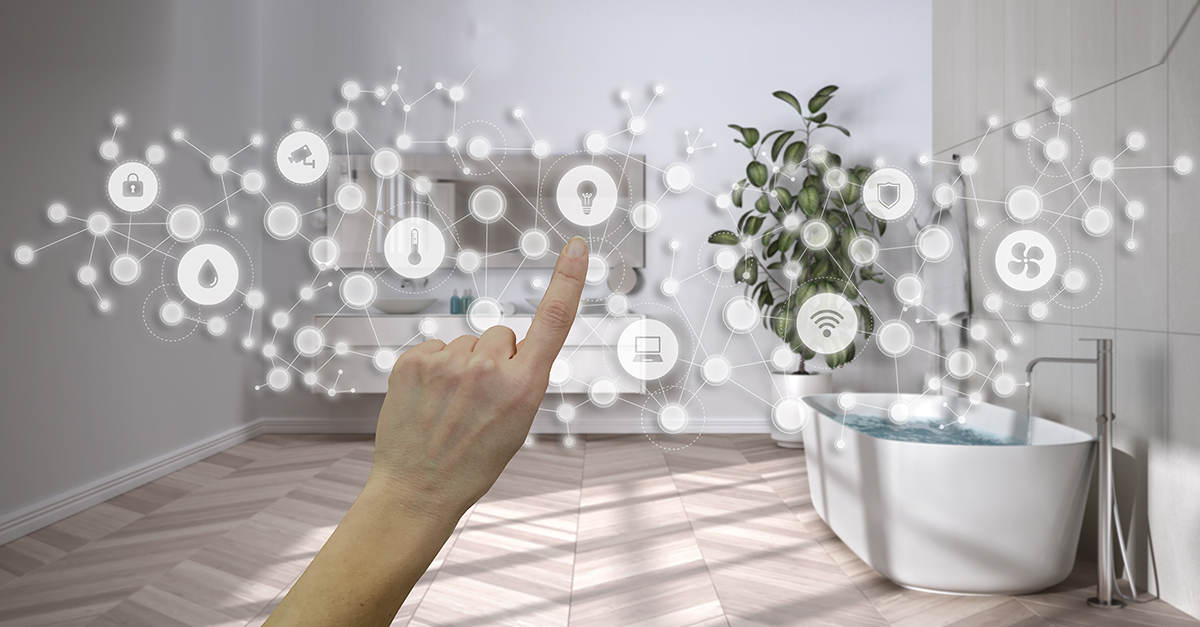Europe and Asia have been experimenting with personalized concepts in public restrooms for more than a decade due, in part, to a geographical emphasis on restroom aesthetics and premiumization. Rightly so, many of these concepts elicit a “That’s so cool!” reaction.
For example, some away-from-home restrooms have fixtures that let users select their preferred lighting effects and music, and some offer toilet seats that can be adjusted for height and temperature. Options also exist for individualized in-stall gaming experiences and digital ads, sanitizer dispensers that sense the size of a user’s hands, and smart toilets that analyze urine to predict illnesses and provide diet and exercise recommendations.
Personalization roadblocks
As cool as these concepts are, many reasons exist why they have not taken hold in public restrooms across the United States. Here are just a few:
- Siloed innovation: No “one-stop-shop” emerges where the various restroom personalization options can be identified, analyzed, and purchased. Rather, the companies developing these unique solutions are siloed, and products are marketed and sold independently. This makes transformative and far-reaching personalization difficult, if not impossible, to achieve.
- High purchase cost: Personalized public restroom offerings are still in their infancy, which, as is the case with many new products or technologies, means they add significant incremental costs to restroom design. Along that same line, public restrooms are currently designed to meet the general needs of the average person because that is most cost-effective. A restroom that
adapts to individual wants and needs is currently cost-prohibitive. - High maintenance cost: Not only are current personalized solutions themselves costly, but so is their maintenance and upkeep. With more technology, moving parts, and bells and whistles, a high probability arises that something could break down or require service. These personalized solutions also require a high degree of product and technology knowledge and savvy on the part of maintainers, which could add pressure to pre-existing labor shortages in the U.S.
- Fear of Big Brother. Solutions that collect personal information are designed with security in mind and with an eye on safeguarding personal information at all costs. But Americans don’t have much of an appetite for anything that suggests “Big Brother” is watching. For this reason, a public toilet knowing a user’s name, age, weight, and diabetes status might not receive a warm welcome.
- Prioritization: Aesthetics and premiumization of the public restroom aren’t at the top of U.S. facilities’ nor the public’s priority lists, at least not in the lavish vein they are overseas. While users appreciate good design, they value products and features that help provide an efficient, hygienic, and frustration-free restroom experience. And facilities value solutions that improve custodian productivity and reduce costs. For these reasons, U.S. aesthetics and premiumization tend to lean toward understated design, touchless fixtures, and smart technologies that help ensure the restroom is consistently clean and well-stocked.
Technology priorities
As the aforementioned barriers are expected to keep U.S. demand low for personalized restrooms, you may be curious as to what’s on the horizon for restroom innovations. Consider the following
options:
- More touchless features: The introduction of automated touchless fixtures, features, and dispensers has transformed the public restroom experience by driving convenience and hygiene while also reducing waste and increasing cost savings. Lights turn on and off automatically, toilets flush with movement, paper towels dispense with the wave a hand. No restroom of the future scenario will bring the use of touch back into prominence.
- Voice activation: Spoken demands, rather than hand waving, to activate a touchless dispenser or fixture could be part of the next iteration of touchless restroom design. This solution offers numerous benefits, including the ability for a user to request a specific amount of paper towels or a desired water temperature. Voice activation does present challenges, though, including the din of a noisy restroom obscuring a spoken request or—on the flip side—the word “flush” setting off a symphony of toilets flushing in an otherwise empty restroom.
- Visual cues: One of the most frequent complaints from restroom users is an empty or broken product dispenser, a problem that is made worse when the user, who is typically looking to get in and out quickly, must migrate from dispenser to dispenser in search of soap or a paper towel. Visual cues, such as a red or green indicator light, let restroom users quickly determine if a dispenser is in service and ready for use. Visual cues are also beneficial to maintenance crews, who can immediately identify if a dispenser is out-of-order or needs to be restocked.
- More connections: Smart restroom technology will continue to gain a foothold as facilities realize that a connected restroom benefits both users and custodians, not only in high-traffic venues but also in restaurants, malls, and healthcare facilities. Additional restroom products beyond dispensers, faucets, and flush valves could soon be connected, creating an end-to-end connected restroom experience that meets users’ expectations every time.
- Optimized flow: The general layout of the public restroom has remained unchanged for decades. Users enter, walk past a sink or set of sinks, reach a stall or set of stalls, and reverse back to exit. But this layout, as well as the placement of dispensers and trash bins, is rarely optimized to the space, creating bottlenecks and traffic jams. New restroom designs could soon incorporate curved walls, angled urinal stations, or clearly defined one-way aisles to improve overall flow and efficiency.
Only in your dreams
Personalized restroom solutions are intriguing and impressive. They’re fun and fantastical. But until they’re grounded in making the public restroom experience more hygienic, more efficient, and more trouble-free for users and maintainers, they will remain a thing of fantasy for America’s away-from-home restrooms.



